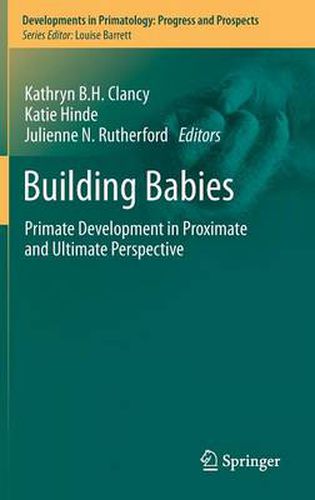Readings Newsletter
Become a Readings Member to make your shopping experience even easier.
Sign in or sign up for free!
You’re not far away from qualifying for FREE standard shipping within Australia
You’ve qualified for FREE standard shipping within Australia
The cart is loading…






This title is printed to order. This book may have been self-published. If so, we cannot guarantee the quality of the content. In the main most books will have gone through the editing process however some may not. We therefore suggest that you be aware of this before ordering this book. If in doubt check either the author or publisher’s details as we are unable to accept any returns unless they are faulty. Please contact us if you have any questions.
The ontogeny of each individual contributes to the physical, physiological, cognitive, neurobiological, and behavioral capacity to manage the complex social relationships and diverse foraging tasks that characterize the primate order. For these reasons Building Babies explores the dynamic multigenerational processes of primate development. The book is organized thematically along the developmental trajectory:conception, pregnancy, lactation, the mother-infant dyad, broader social relationships, and transitions to independence. In this volume, the authors showcase the myriad approaches to understanding primate developmental trajectories from both proximate and ultimate perspectives. These collected chapters provide insights from experimental manipulations in captive settings to long-term observations of wild-living populations and consider levels of analysis from molecule to organism to social group to taxon. Strepsirrhines, New World monkeys, Old World monkeys, apes, and humans are all well-represented. Contributions by anthropologists, microbiologists, psychologists, population geneticists, and other primate experts provide Building Babies a uniquely diverse voice.
Building Babies features multi- and trans-disciplinary research approaches to primate developmental trajectories and is particularly useful for researchers and instructors in anthropology, animal behavior, psychology, and evolutionary biology. This book also serves as a supplement to upper-level undergraduate courses or graduate seminars on primate life history and development. In these contexts, the book provides exposure to a wide range of methodological and theoretical perspectives on developmental trajectories and models how researchers might productively integrate such approaches into their own work.
$9.00 standard shipping within Australia
FREE standard shipping within Australia for orders over $100.00
Express & International shipping calculated at checkout
This title is printed to order. This book may have been self-published. If so, we cannot guarantee the quality of the content. In the main most books will have gone through the editing process however some may not. We therefore suggest that you be aware of this before ordering this book. If in doubt check either the author or publisher’s details as we are unable to accept any returns unless they are faulty. Please contact us if you have any questions.
The ontogeny of each individual contributes to the physical, physiological, cognitive, neurobiological, and behavioral capacity to manage the complex social relationships and diverse foraging tasks that characterize the primate order. For these reasons Building Babies explores the dynamic multigenerational processes of primate development. The book is organized thematically along the developmental trajectory:conception, pregnancy, lactation, the mother-infant dyad, broader social relationships, and transitions to independence. In this volume, the authors showcase the myriad approaches to understanding primate developmental trajectories from both proximate and ultimate perspectives. These collected chapters provide insights from experimental manipulations in captive settings to long-term observations of wild-living populations and consider levels of analysis from molecule to organism to social group to taxon. Strepsirrhines, New World monkeys, Old World monkeys, apes, and humans are all well-represented. Contributions by anthropologists, microbiologists, psychologists, population geneticists, and other primate experts provide Building Babies a uniquely diverse voice.
Building Babies features multi- and trans-disciplinary research approaches to primate developmental trajectories and is particularly useful for researchers and instructors in anthropology, animal behavior, psychology, and evolutionary biology. This book also serves as a supplement to upper-level undergraduate courses or graduate seminars on primate life history and development. In these contexts, the book provides exposure to a wide range of methodological and theoretical perspectives on developmental trajectories and models how researchers might productively integrate such approaches into their own work.